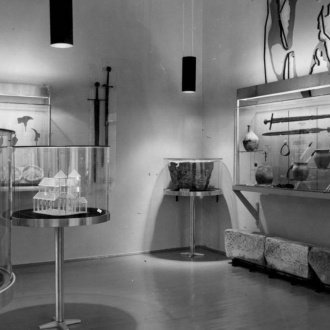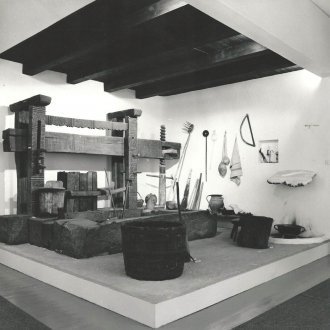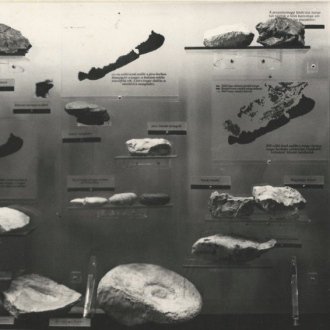We are proud of our predecessors, their vision and their persistent work, and to whom we owe the Museum.
It all started with an idea
In the last decade of the 19th century, in the spirit of the preparations for the millennium, the idea of establishing a Balaton-Region Museum was raised.
In Keszthely, Árpád Csák, a judge, and Sándor Lovassy, an academic teacher, were the main supporters of the Museum’s cause.
The Balatoni Museum Association was founded in June 1897, which actually counted on its existence from August 1898, from the inaugural general meeting and the offering of the first deposit.
The beginnings
The archeological collection of Árpád Csák was exhibited in some rented rooms of the former Institute of Economics at the main square. The natural sciences department was established, the growth of the library stock began, and János Sági laid the foundations of the ethnographic collection.
In order to secure financial resources, the founders of the museum regularly addressed letters to the county and town authorities, in which they called for support for the Museum and the collection work. The development of the departments was made possible by the annual state aid.
Thanks to the financial conditions, Árpád Csák was able to carry out excavations in Fenékpuszta, Alsópáhok, the Dobogó field, Újmajor and Balatonhídvég, among others. The Museum also received an independent plot of land at Kossuth St.-Balaton St. and the first building plans were completed (in 1905 and 1907).
In 1913, the stock of the antiquities collection was 9,485, that of the ethnographic collection was 4,254, that of the ethnographic collection was 806, and that of the natural history collection was 3,528. The library had 3,630 books. During World War I, growth was small, but military history became an independent department from then on.
The new museum building
In the 1920s, the Museum was finally brought to housing. The neo-baroque building was built on the former princely plot between 1925-28, according to the plans of Dénes Györgyi.
Although the internal works dragged on until the late 1930s, in 1935 the collections were already moved into the Museum. The natural history exhibition was opened first, later the archeological material was presented.
Due to the merger with the Darnay Museum in Sümeg (1936), the collection expanded significantly, yet the new artefacts were not presented to the public. The nationalization of the extended museum was on the agenda: however, this did not happen until 1949.
World War II.
And then World War II. stopped the way for further developments. Béla Dornyay became the director of the Museum in 1941, and the organization of a large complex exhibition began, but due to the war conditions, it stopped.
The military hospital had to be accommodated in the same way as the boxes of the Székely National Museum from Sepsiszentgyörgy, and when the boxed collections were put on a train together with the packed material from Keszthely and Sümeg in March 1945, a bomb attack at the nearby Zalaegerszeg railway station destroyed the train and the irreplaceable valuables.
Various plans were made for the utilization of the vacated Museum, but only the nationalization and the permanent exhibition created in 1949, still largely from borrowed artefacts, did permanently consolidate the Museum’s position. From then on, the Museum began to develop again.
The permanent exhibition is renewed
Under the direction of József Csalog (1949-1951) and Károly Gaál (1951-1956), the management of specialist inventory books and post-war collecting work began – in all disciplines.
From 1962 to 1979, as part of the Veszprém County Museum Organization, under the direction of the archaeologist, Károly Sági (1956-1979), the number of employees expanded to include museologists. Opened in 1967, the permanent exhibition was able to rely on the Museum’s own material.
The new era
In 1979, when Keszthely town returned to Zala County, a new era began. Between 1980 and 1986, the technical modernization and renovation of the building took place, and from 1986 to 2008, a complex exhibition presented the life of Lake Balaton and its surroundings.
The new permanent exhibition opened in the second half of 2009 to reveal the contemporary and old world of Lake Balaton to visitors with an upgraded installation and a novel approach.
The numerous temporary exhibitions with different profiles attract many visitors, and the growth of the professional collections appears to be continuous for the most part. At present, the total stock reaches 380,000 artefacts.






